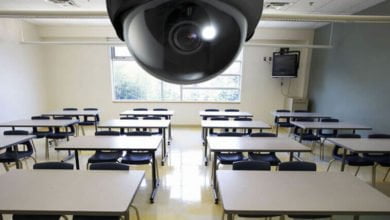
 -Ritesh Sharma
-Ritesh Sharma
The coronavirus disease has clasped education. Policymakers are struggling to reopen schools. They are inclined to bring life back on track. But without considering the full spectrum of benefits and hazards along with analysis of health risks versus the corollary of delayed learning.
The union government has come forward with guidelines to initiate the reopening but the plethora of obligations and directions shudder the confidence of parents, schools and also the authorities.
The concern of parents is the safety of their children. The education aakas who run education as business under the cloak of service to society are leaving no stone unturned to reopen schools for obvious reasons like mounting expenses with deferred fees. But they are shirking their duty to provide a safe environment to children; some of them even seeking undertakings from parents to absolve them from any and every responsibility.
Holiday always brought a smile to every student’s face. But the extended off from school is proving harmful to children. It is translating into negative social, emotional, and behavioral health along with the academic attainment, in both the short and long term.
Students want school, friends and activities; the parents are concerned about their safety; schools want to reopen to fulfil their obligations and the bureaucrats want to push life ahead as untamed corona seems to be the ‘new normal’ and is surely going to stay for long.
With choking medical facilities, anticipation of a new wave of infections during winters, various health hazards and many other unanswered questions, the parents, health workers and social organisations are reluctant to support reopening. Mounting pressure from experts, parents and various social organisations has made the states keep the schools closed but it may not last for long.

“Reopening schools may have its advantage, but reopening it without having a clear strategy regarding redefined syllabus, assessment, adequate counselling, and psychological support to help the student in transition, teacher training to address student’s fear, stress, anxiety, at this tail-end of the session will result in many foreseen and unseen disastrous outcomes.” – Abhidha Seth, Project Head of Delhi Government Preschools

“Our children have been reduced to four walls of house for almost 8 months. This has not only affected their physique but also their mental and learning aptitude. It would be better if the government declares this session as zero year to save the tender minds from unnecessary pressure.” – Shalini Khandelwal, President of Uva Foundation actively involved into youth and child issues, suggests,
But this is not the first time the problem of such magnitude is being faced. The world has witnessed a similar scenario a century ago — in 1918 when the outbreak of influenza pandemic killed almost 500 million people worldwide. Though the parameters at that time were altogether different in terms of health facilities, population, awareness and value for life but the discussion was just as heated with the majority of schools closed.
During the 1918 pandemic, the police cars were ambulances, offices became home for bureaucrats, and teachers were attached with health workers. The health officials, community leaders, police and various other departments worked together with schools to monitor infection rates, providing additional training to the teachers and maintaining complete hygiene in schools. It was only after the formal health training of teachers, the schools were reopened. The policy makers designed a gradual reopening schedule with senior classes opening first followed by middle school only when the infection rate dropped. Social organisations were engaged to do door to door counselling for junior students who had to stay at home for the whole pandemic.
“It takes a village to raise a child,” the African proverb aptly suits here. It is the shared responsibility of society to raise and take care of children which includes: family, neighbours, teachers, doctors, health workers, and NGOs. When it comes to school reopening, the responsibilities shared by all above become a delegated duty for teachers. Thus the government should immediately put efforts to provide training to the school teachers about the pandemic, how to deal and contain its spread before the schools reopens.
The constant observation of trained teachers will give students and families a feeling of safety and repair the fractured confidence of parents for sending their children back to school.
According to available data, school aged children are not immune to COVID-19 infections and it may get transmitted to their families and communities. The closed schools also have negative individual and societal ramifications. At the same time education and schools are important, but life and health shall always hold prominence. Once the schools reopen, this notion should be inculcated in all the stakeholders of the education ecosystem. Various creative means such as ‘open classrooms, outdoor education, lunch with teachers’ to name a few may be promoted to avoid closed classrooms while observing all precautions to protect students, teachers, others and their families.
In present times of dismay we have an opportunity to ‘learn from history’, and clear our doubts as there are many things we could aspire to learn and may prove worth heeding today and provide a better understanding to cope with the present pandemic situation. May we have the courage to take ‘the lessons from history’.
Ritesh Sharma is activist and legal consultant, the views expressed are personal.








